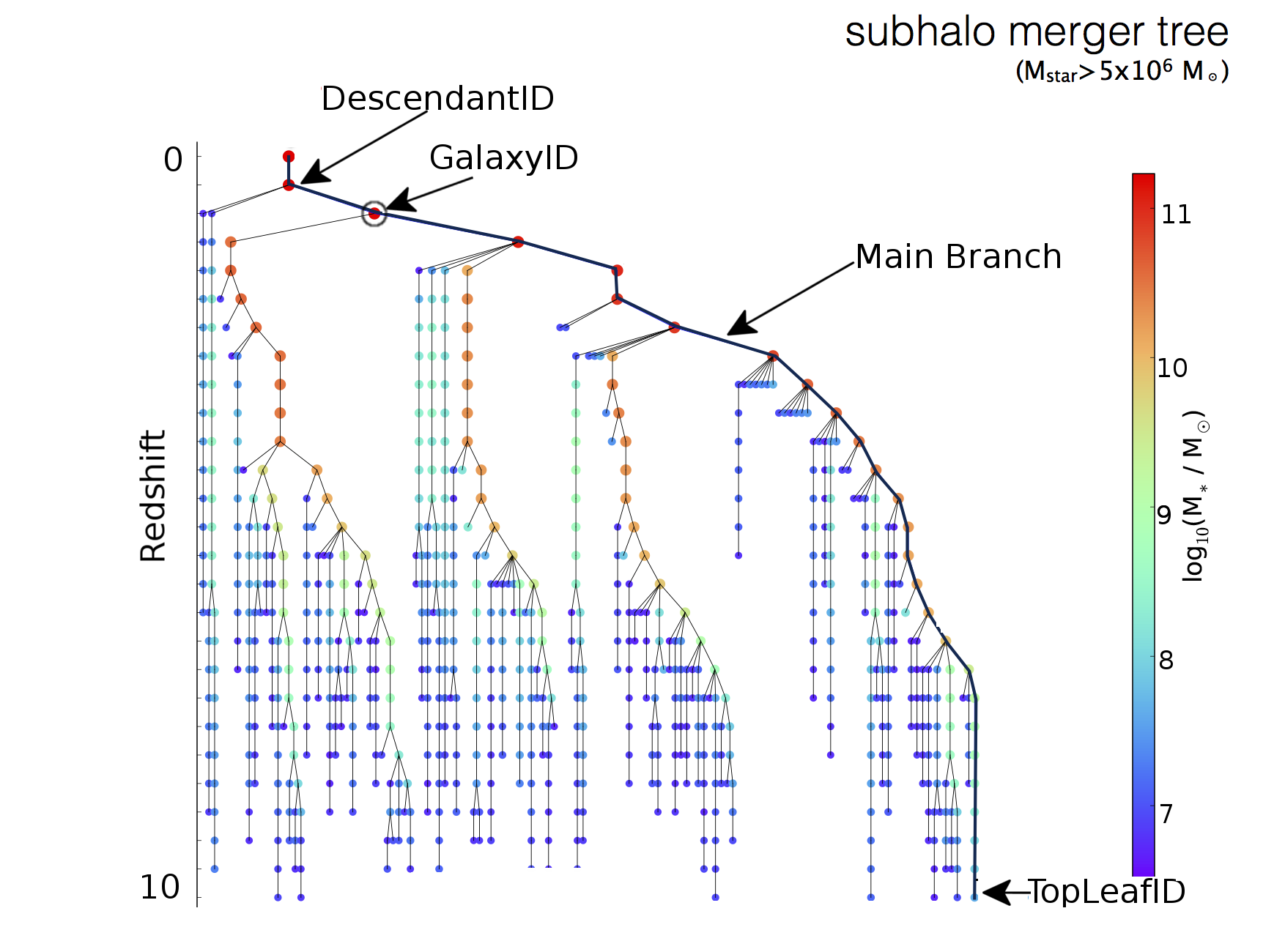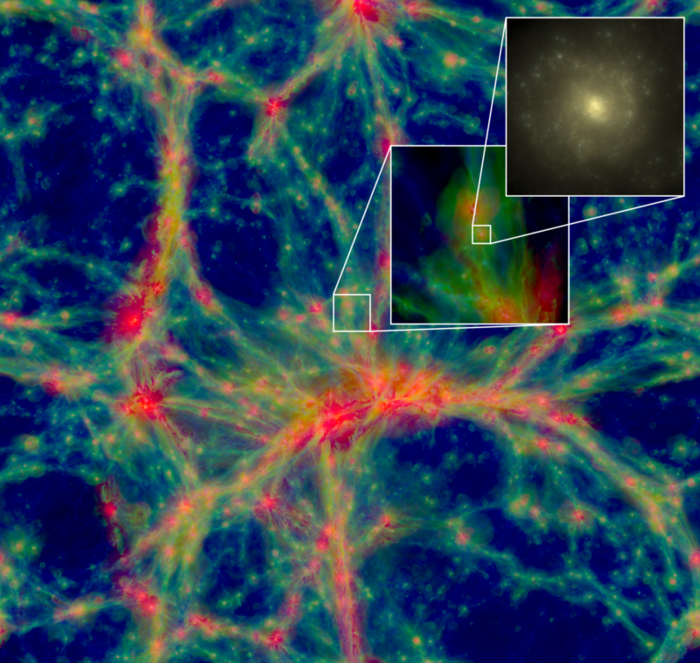THEORY AND MODELS OF GALAXY EVOLUTION:
Galaxies originate from the primordial density fluctuations
observed in the CMB. However, the details that define and shape
the different types of galaxies observed in the local universe are
far from being fully understood. Strong evidence has accumulated
that indicates that the growth of structures is well described by
a hierarchical evolution driven by dark matter and dark energy,
the so-called ΛCDM paradigm. This hierarchical growth means
that larger objects are the result of mergers of smaller
units. While dark energy determines the Hubble flow at large
scales, dark matter drives the gravitational collapse of bound
systems, completely detached from the universal expansion.

N-body simulations describe how dark matter particles, through
gravity, build up the massive halos of galaxies, groups of
galaxies, and clusters of galaxies. The accretion history of halos
is usually discribed by a tree structure (Fig. 1) that associates
the different sub-halo components as time goes by. Because the
only interaction is gravity, the physical modeling is essentially
simple, concentrating most of the difficulty the mathematical
problem itself of solving a system composed by N bodies, with N
usually being several billions of particles. This requires a big
computing power achieved with supercomputers. In this way, one can
model the hierarchical growth of matter in volumes of up to
several Gpc on a side, containing several thousands of galaxy
halos at least. The distribution of dark matter density within
halos is usually represented by a NFW profile. The most important
limitation is the resolution of the models in terms of number of
particles and volume. Typical masses for particles are of the
order of 106 M☉.
However, the universe contains baryons, and a realistic simulation
of galaxy formation and structure growth must include the physics
of baryonic matter in addition to dark matter. This is achieved
through semi-analythical and hydrodynamical codes that try to
reproduce the observed light emission of galaxies across the
electromagnetic spectrum inside dark matter halos. For this to
happen, models has to take into account the variety and complex
nature of different physical processes involving baryons such as:
gas cooling, gas heating, gas accretion, star formation and
evolution, feedback processes, metal enrichment, etc. Besides, the
conditions of the baryons such as density, temperature and
pressure has to be considered. Since galaxies are not isolated,
galaxy-galaxy and galaxy-IGM interactions also need to be
implemented in the models, which further justify the need for
powerful supercomputers. In the end, the simulations need to
reproduce, in a statistical sense, the mass distribution of
baryons and dark matter, as well as the distribution of
brightness, color, morphology, internal kinematics, etc., of
galaxies in a representative volume of universe, from about 100
Mpc down to sub-kpc scales.
Researchers of GaTOS have access to complex codes, powerful
computers and state-of-the-art simulations (e.g. EAGLE) to study
in great detail the co-evolution of baryons and dark matter in the
universe. The simulations allow us to investigate the stellar mass
assembly history of galaxies and their quenching history, thus
providing vital information that can be compared with
observational data to better understad the nature vs nurture
problem.
